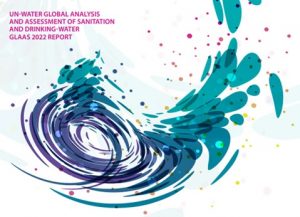GLAAS Report 2022:

The Global Analysis and Assessment of Sanitation and Drinking-Water (GLAAS) report was released by the World Health Organization (WHO) and UN-Water.
Highlights of the Report:
- Less than one-third of countries reported maintaining enough human resources to manage essential Water, Sanitation and Hygiene (WASH) tasks.
- 45% of countries are on track to meet their drinking-water coverage targets, but only 25% are meeting their sanitation targets.
- More acceleration is needed to achieve national targets.
- While WASH budgets in some countries have increased, a significant portion — more than 75% of them — reported having inadequate resources to carry out their WASH plans and objectives.
- Most WASH policies and plans do not consider climate change threats to WASH services, nor do they take the climate resilience of WASH technology and management systems into account
- The increasing frequency and intensity of extreme weather events caused by climate change continue to hamper the delivery of safe WASH services, thus affecting the health of users.
- Aid for water and sanitation decreased by 5.6% between 2017 and 2020, and the geographical targeting of the aid shifted.
- In sub-Saharan Africa, the proportion of WASH aid dropped from 32% to 23%, while in Central and Southern Asia, it increased from 12% to 20%, and in Eastern and South-Eastern Asia, it increased from 11% to 20%.
WASH:
- WASH is an acronym that stands for the interrelated areas of Water, Sanitation and Hygiene.
- The World Health Organisation (WHO) WASH Strategy has been developed in response to Member State Resolution (WHA 64.4) and the 2030 Agenda for Sustainable Development (SDG 3: Good Health and Well Being, SDG 6: Clean Water And Sanitation).
- It is a component of WHO’s 13th General Programme of Work 2019–2023 which aims to contribute to the health of three billion through multisectoral actions like better emergency preparedness and response; and one billion with Universal Health Coverage (UHC).




